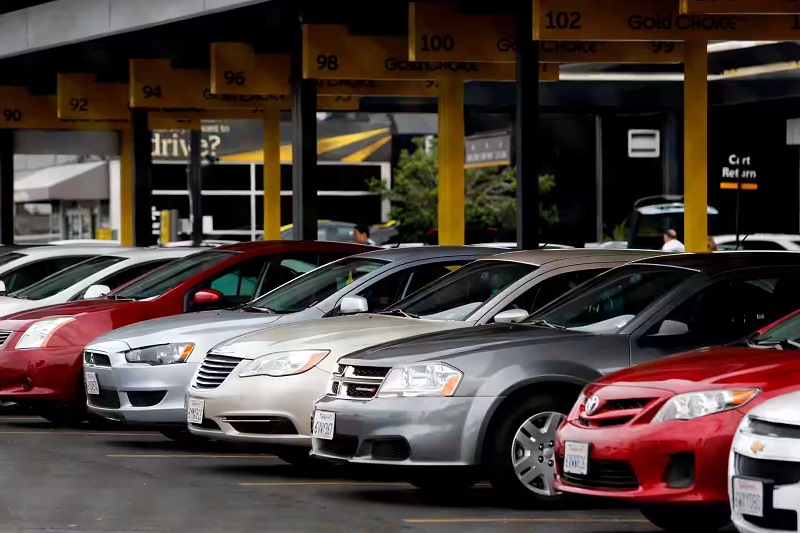You don’t need a garage full of cars to make money renting cars. What you do need is a smart way to match drivers with the right vehicles, keep standards high, and price time and miles realistically. That’s where hosting on a modern platform—think verification, delivery scheduling, transparent fees, and real availability—turns a side idea into a real income stream.
Quick take
You can host on a car rental platform without owning a fleet by (1) co-hosting for busy owners, (2) managing owner partnerships on revenue-share, (3) focusing on monthly rentals for relocations and teams, (4) pairing event demand (weddings, film shoots) with suitable vehicles, and (5) piloting EVs with owners who want dependable bookings. Start small, nail your guest experience, then scale with repeatable operations.
Fastest path to first bookings: list on a car rental marketplace where people already search, and let built-in tools (availability, messaging, delivery notes) do the heavy lifting while you focus on service.
Who this guide is for
- Side hustlers with time, logistics skills, and a good eye for detail
- Property/concierge managers adding vehicles to an existing client base
- Event planners/photographers who already get wedding or production inquiries
- Relocation/corporate housing pros who can bundle 30-day rentals with stays
5 earning models that don’t require owning cars
1) Co-host for busy owners (management fee)
Owners supply the vehicle; you handle listings, photos, guest screening within platform rules, delivery/pickup windows, and cleaning. Typical income: a fixed setup fee + 15–25% of booking revenue, depending on your responsibilities.
Keys to win:
- Clear checklists (fuel/charge level, cleanliness, tire pressure, photos before/after)
- Smart pickup windows (early AM and late PM slots book better)
- Stored supplies (microfibers, glass cleaner, phone chargers, tire gauge)
2) Owner partnerships (revenue share)
You recruit local owners (executive sedans, SUVs, EVs) and manage end-to-end operations. Owners get consistent bookings and vetted guests; you get a higher share (25–40%) because you’re running the play.
What to set up:
- A simple one-page agreement (availability, maintenance schedule, who pays for what)
- Delivery zones and fees are clearly stated on the listing
- Mileage tiers that match common routes (Cape, Newport, Portland, Berkshires)
3) Monthly rentals for relocations & project teams
Longer bookings smooth out cleaning turns and reduce idle time. Aim at traveling nurses, visiting professors, contractors, and relocated families.
How to position it:
- “30+ day rates,” “extended miles,” “Logan delivery,” “garage-friendly height”
- “Executive sedan with CarPlay/Android Auto,” “AWD SUV with winter tires Dec–Mar”
4) Events & productions (premium day rates)
Weddings, brand shoots, and small productions pay more for the right vehicle plus tight timing and spotless presentation.
Operational musts:
- Exact staging notes (curb, valet, rooftop garage rules)
- Two-hour buffer before and after
- Lint rollers, white towels, clear umbrellas (New England insurance policy)
5) EV pilot with owners who want steady bookings
EV owners often want dependable usage and simple charging guidance for guests. You provide an easy itinerary: DC fast-charge pins on I-90/I-93/I-95, Level-2 near hotels, and a mobile connector in the trunk.
Host checklist:
- Confirm charger cables at handoff
- “Charge while you dine” waypoints in the messaging
- Return-charge policy that’s achievable
The money math (illustrative, not a promise)
2-day weekend (executive sedan)
- Rate: $185/day × 2 = $370
- Delivery + cleaning: $65
- Your co-host fee at 20% ≈ $87
- Net to owner after fees/cleaning varies; your time: 2 handoffs, 1 clean
30-day relocation (AWD SUV)
- Rate: $119/day × 30 = $3,570
- Extended miles: $180
- Your management share at 30% ≈ $1,125
- Fewer turns, predictable schedule, happier calendar
(Always align rates with local demand, season, and vehicle class.)
Pricing & mileage that actually convert
- Offer three mileage tiers: standard (city plans), extended (one scenic loop), unlimited (multi-stop weekends).
- Use timing to lower cost: mid-week start, late-evening pickup, shoulder seasons.
- Set clear delivery zones: Logan curbside, Back Bay/Seaport hotels, Cambridge/Brookline—list fees up front.
- Bundle value: includes phone cables, bottled water, and a 2-minute feature walkthrough (drive modes, cameras, CarPlay/Android Auto).
Compliance, safety & trust (non-negotiables)
- Insurance: confirm owner’s policy and platform requirements; don’t double-bill protection.
- Inspections: tire tread (≥4/32 in), brake feel, wipers, lights, and warning lights cleared.
- Photos: time-stamped, high-res before/after—wheels, corners, windshield, odometer, fuel/charge.
- Data privacy: use platform messaging and in-app tools; never store IDs casually.
- Local rules: respect residential parking, loading zones, and garage height limits.
Your first 10 steps (copy–paste checklist)
- Pick your niche (executive sedans, AWD SUVs, EVs, or events).
- Recruit 1–2 owners with clean, well-maintained vehicles.
- Write human listings that describe use cases (city week, Cape day, monthly stay).
- Shoot bright, consistent photos (framing: exterior ¾, cockpit, rear seats, trunk).
- Set delivery windows that match flights and dinner hours.
- Publish calendar availability and mileage tiers that fit local routes.
- Create a handoff script (IDs, walk-around, fuel/charge, seat/mirror memory).
- Stock cleaning and quick-fix supplies.
- Track every question you get—turn frequent answers into prewritten message templates.
- After each trip, ask one honest question: “What would have made this easier?” Then implement it.
Host playbook: messages that win
- Pre-trip: “Heads up—garage height at Pru is 6’6″. Using Logan curbside or hotel lobby handoff?”
- Day-of: “Car’s staged at 5:20 p.m. with full tank and phone cables in the console. Quick tour when you arrive?”
- Mid-trip (EV): “Best fast charger on your route is Hooksett; grab 15–20 minutes during coffee and you’ll be set for the day.”
- Return: “I’ll meet you at 7:45 p.m. by the valet stand—photos + keys take two minutes.”
When to scale
- You hit >80% weekend utilization for 6–8 weeks
- Your response time averages <5 minutes
- Guests mention “clean,” “easy,” and “exactly as described” in reviews
- An owner asks you to take on a second car (or a friend of theirs does)
Frequently asked (short and honest)
Do I need to own the car to host?
No. Co-hosting and owner partnerships are common—just put everything in writing (availability, maintenance, who pays for what).
What about insurance?
Confirm owner coverage and follow platform requirements. Avoid overlapping protection; clear is cheaper.
How many cars do I need to start?
One car you don’t own is enough. Focus on predictable delivery windows and fast communication first.
Are EVs worth it for guests?
Yes—if you give them charger pins and a simple plan (charge while you eat). The quiet city drive sells itself.
The simple path forward
Start with one reliable vehicle, one owner who trusts you, and one clean listing. Tighten your handoff, write better messages, and let reviews do the marketing. When the process feels light, add the next vehicle.
When you’re ready to publish your first listing, post it on a reliable car rental platform that already has the shoppers’ real availability, transparent pricing, and delivery notes built in—so you can spend your energy on the experience.










